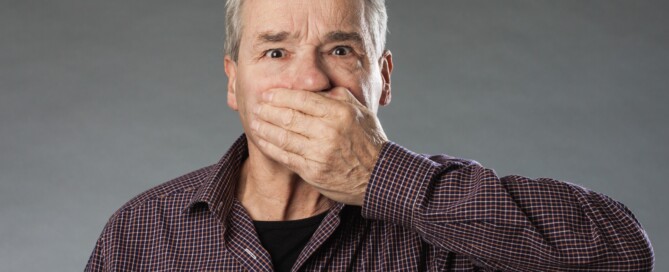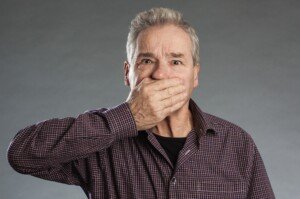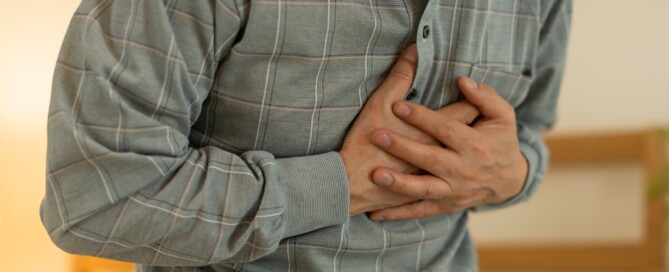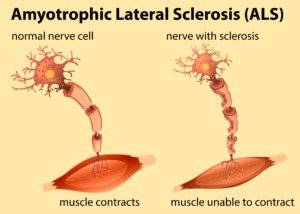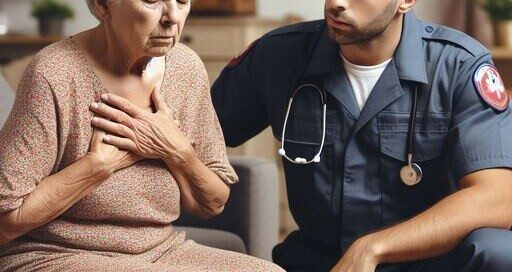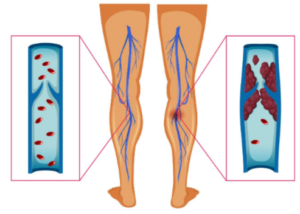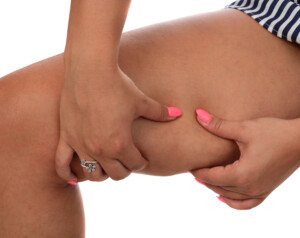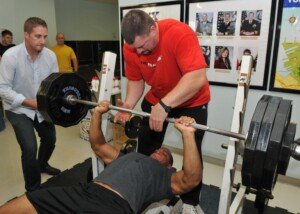Constant Burping After Eating: Causes, Solutions
Do you find that after eating, you burp or belch a lot and it’s so embarrassing and frustrating?
Many people assume that burping during or after eating is a sign of poor table manners.
And in many cases it certainly is. Some people even see who can generate the loudest burp.
Then soon after other people will be burping, trying to outdo the previous belch.
This hardly sounds like an underlying medical cause.
However, there are times when what sounds like a “good” belch actually has to do more with what’s going on inside your body than a mere lack of table manners.
A Lot of Burping After Eating
It’s too simplistic to just chalk the cause of frequent burping after eating to gulping air when eating and drinking, or eating too much too quickly.
“Constant burping can be a sign that the valve at the bottom of the esophagus is weak,” says Jay Desai, MD, who specializes in colon cancer screening, upper endoscopy and consultative gastroenterology with New York Gastroenterology Associates.
“There are certain foods and activities that have been known to weaken this muscle, including caffeine, alcohol, tobacco and being overweight.
“There are also certain diseases where the muscle at the bottom of the esophagus doesn’t function properly, such as when patients have a hernia of the stomach.” Surgery is a treatment option for hernias.
Solutions to Constant Burping after Eating
“In addition to healthy lifestyle interventions [such as exercising and healthier eating to lose weight], we recommend drinking less carbonated beverages in these situations and avoiding talking while eating to minimize the amount of air swallowed during consumption,” says Dr. Desai.

Board certified in internal medicine and gastroenterology, Dr. Desai provides a wide range of GI services including for bacterial overgrowth, constipation, acid reflux and GERD, IBS, incontinence and small bowel disease. Twitter handle: @NYGADocs
 Lorra Garrick has been covering medical, fitness and cybersecurity topics for many years, having written thousands of articles for print magazines and websites, including as a ghostwriter. She’s also a former ACE-certified personal trainer.
Lorra Garrick has been covering medical, fitness and cybersecurity topics for many years, having written thousands of articles for print magazines and websites, including as a ghostwriter. She’s also a former ACE-certified personal trainer.
.
Top image: Shutterstock/TunedIn by Westend61
facebook.com/NYGastroenterologyAssociates
Can GERD Cause Sharp Pain just Below the Sternum?

A sharp pain below the sternum is likely to have a cause other than GERD (gastroesophageal reflux disease).
This includes costochondritis (inflammation of the cartilage at the sternum and rib junction), a skeletal muscle spasm and an esophageal spasm—all benign situations.
A broken rib can easily cause sharp pain below the sternum (you’d likely make this connection due to a recent trauma in that region), as well as pleuritis.
These last two situations, when causing sharp pain under the sternum, often cause more pain upon inhaling.
“GERD is a condition of abnormal acid exposure in the esophagus; the classic symptoms include burning in the pit of the belly that regurgitates up to the mouth,” explains Jay Desai, MD, who specializes in colon cancer screening, upper endoscopy and consultative gastroenterology with New York Gastroenterology Associates.
“It can certainly cause pain below the sternum that can commonly be confused as a heart attack.
“If patients are at a high risk for cardiovascular disease, we recommend that they be seen by a cardiologist even if they have acid reflux disease. Typically the pain is vague and not specific to a size.”
“Size” refers to the perceived surface area of the pain or discomfort. A person with a heart problem can also, by coincidence, experience acid reflux.
Make sure that cardiac problems have been ruled out.
Unfortunately, sternum pain from GERD can be severe enough to make a person think they’re having a heart attack or a heart related episode such as angina from clogged arteries.
A tip-off that it’s a heart problem is that whenever the sternum pain occurs, you’re exercising or physically exerting yourself, and it disappears when you stop the activity.
A tip-off that it’s related to GERD is that it usually occurs, for instance, overnight when you’re lying in bed (and vanishes when you sit up), or shortly after a meal.
If you’re having sternum pain that’s related to GERD (your doctor has ruled out cardiac problems), then pay attention to when it occurs to see if there’s a pattern.
In fact, eating too rapidly can cause discomfort in the chest (arising from the esophagus).
Finally, a sudden but extremely brief “pain” in the chest or sternum region can actually be caused by the motility of bowel movements (the large colon is located close enough to the chest area for this to happen).

Board certified in internal medicine and gastroenterology, Dr. Desai provides a wide range of GI services including for bacterial overgrowth, constipation, acid reflux and GERD, IBS, incontinence and small bowel disease. Twitter handle: @NYGADocs
 Lorra Garrick has been covering medical, fitness and cybersecurity topics for many years, having written thousands of articles for print magazines and websites, including as a ghostwriter. She’s also a former ACE-certified personal trainer.
Lorra Garrick has been covering medical, fitness and cybersecurity topics for many years, having written thousands of articles for print magazines and websites, including as a ghostwriter. She’s also a former ACE-certified personal trainer.
.
Top image: Shutterstock/sukiyaki
Can GERD Cause Blood in Your Saliva?

If your only symptom is excess saliva, can this be caused by GERD (gastroesophageal reflux disease)?
Excess saliva can be caused by a number of conditions, but can this symptom be the only presentation of acid reflux?
“GERD is a condition that causes an abnormal amount of acid to reside in the esophagus,” says Jay Desai, MD, who specializes in colon cancer screening, upper endoscopy and consultative gastroenterology with New York Gastroenterology Associates.
“Some patients will not experience the classic sensation of burning; however, they may still have acid exposure in the mouth and esophagus which could manifest as excess saliva, coughing or a hoarse voice. It’s important to note that the mechanisms for this are unclear.”
Have you found that severe, ongoing anxiety causes excess saliva?
The anxiety actually triggers acid reflux, and hence, the excess “saliva.”
However, this has nothing to do with the salivary glands becoming overly active.
At any rate, it’s a harmless symptom, and when the anxiety diminishes, you’ll notice that the symptom goes away. blood

Board certified in internal medicine and gastroenterology, Dr. Desai provides a wide range of GI services including for bacterial overgrowth, constipation, acid reflux and GERD, IBS, incontinence and small bowel disease. Twitter handle: @NYGADocs
 Lorra Garrick has been covering medical, fitness and cybersecurity topics for many years, having written thousands of articles for print magazines and websites, including as a ghostwriter. She’s also a former ACE-certified personal trainer.
Lorra Garrick has been covering medical, fitness and cybersecurity topics for many years, having written thousands of articles for print magazines and websites, including as a ghostwriter. She’s also a former ACE-certified personal trainer.
.
Top image: ©Lorra Garrick
If Housework IS Exercise, Shouldn’t Maids Look Like Fitness Gurus?
“There has been a marketing trend propagated to convince people that everyday chores like cleaning a house is exercise,” says Steve Cotter, Director, International Kettlebell and Fitness Federation (IKFF).
Cotter continues, “It’s an attractive concept because, while not fun, housework is not fear-inducing the way doing pushups or squats might be.
Usually these types of proclamations are combined with some pill or otherwise ‘quick-fix’ solution when the truth is, only consisted hard work over time will accomplish the goal of being fit.
“Housework is low intensity, meaning there is very little caloric output. So if that is the only ‘exercise’ a person does, without any changes to eating and activity habits, there will be no body-toning qualities at all!
“Nothing worth accomplishing is easy; there has to be effort, and the sooner people can be honest about that, the better able they can achieve something real, positive and lasting.”
I’ve noticed that those who insist that housework counts as exercise never have hard, fit-looking physiques like the woman in the photo below.
You simply cannot look like the women below and NOT be physically fit.

Freepik/yanalya
As a fitness expert, I’ll admit that there are people who don’t look like this but are very physically fit from a cardiovascular standpoint: e.g., marathon runners and avid hikers.
But the marathon runner does not have overall fitness. A marathon runner wouldn’t last long shoveling snow or helping a friend move heavy furniture.
Overall fitness encompasses cardiovascular health plus musculoskeletal health (strong dense bones, tough joints and strong muscles, muscle stamina and flexibility).
Body composition is also a crucial factor. A high ratio of fat to muscle is not healthy. Looks are very telling.
You need not be “ripped” to be in top physical condition, either. But there are certainly tell-tale signs of fitness vs. being in poor physical condition.
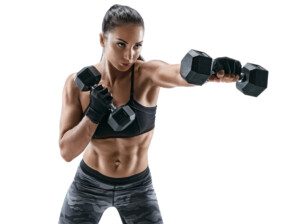
Shutterstock/RomarioIen
So if housework counts as good exercise, or a good way to get fit, then it stands to reason that people who clean homes for a living, or who do housekeeping duties in buildings like hospitals, would have outstanding physiques—or at least—bodies that appeared physically fit.
I have seen many housekeeping personnel over the years in various settings (e.g., hotels, hospitals, schools, business buildings). Few ever looked like they might work out.
Most appeared quite out of shape. This doesn’t necessarily mean overweight, though the majority of female cleaning crew I’ve ever seen over the years was overweight, often clinically obese.
But the thinner ones appeared “skinny fat.” No muscle tone. Flabby soft arms, weak-looking upper bodies, sagging breasts, excess fat in the midsection but scrawny looking limbs.
They do housework for a living yet look this way. How do the “housework counts as exercise” proponents explain this?
There is a powerful correlation between physical fitness and appearance.
But to be fair, I’ll point out that the 250 pound, 5’6” woman who can hoist a 200 pound barbell over her head is still carrying dangerous levels of fat in her body.
She’s at risk for type II diabetes, high cholesterol and heart disease down the road.
But one need not be able to perform extraordinary feats of strength to be in tip-top physical condition.
A 300 pound, 5’10” man who can bench press 400 pounds is not what I’d consider physically fit—a man like this would flounder at running, step classes, hill dashing—it’s a sure bet he’d be winded after trotting up just a few flights of stairs. I’d hate to see how much fat surrounds his heart.
However, again, lifting super enormous amounts of weight is not the criterion for tip-top fitness.
So what is? There’s a number of ways to predict all-cause mortality and mortality in the near future.
One of them is the sit-and-stand test: Can you stand up, from the floor, without your knees or hands touching the floor in the process?
Another is heart rate recovery. And yet another is the ability to do pushups. There are more.
People who can perform these tasks or have great heart rate recoveries tend to have a particular physical appearance. They tend NOT to have a particular physical appearance.
Housework won’t get you passing the sit-and-stand test. Housework will not grant you a good heart rate recovery. If all you do is housework for “exercise,” you’re fooling yourself big-time.
“If a custodian is very muscular and fit, it is because they are doing some other more vigorous activities outside of the cleaning work itself,” says Cotter.
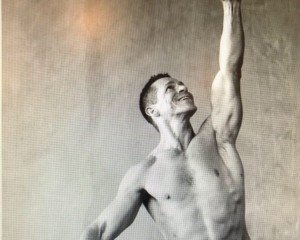 For 30+ years Steve Cotter has promoted body-mind fitness around the world through martial arts, qigong, mobility, flexibility and kettlebell training.
For 30+ years Steve Cotter has promoted body-mind fitness around the world through martial arts, qigong, mobility, flexibility and kettlebell training.
 Lorra Garrick has been covering medical, fitness and cybersecurity topics for many years, having written thousands of articles for print magazines and websites, including as a ghostwriter. She’s also a former ACE-certified personal trainer.
Lorra Garrick has been covering medical, fitness and cybersecurity topics for many years, having written thousands of articles for print magazines and websites, including as a ghostwriter. She’s also a former ACE-certified personal trainer.
.
Top image: Freepik/cookie_studio wonder
Lying Triceps Extension for Big Arms
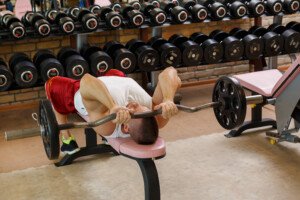
It’s strange that many trainees who desperately want big arms focus a lot of time on building the biceps and pay little mind to the triceps, not knowing about the lying triceps extension for big arms.
For those wanting huge arms, don’t forget about what you can’t see: the triceps! The triceps compose two-thirds of one’s arm.
If you’ve ever seen a guy with huge arms and thought, “I want arms like that!” recall exactly what it was you saw, and you’ll realize that most of the mass was behind the arm, not in front.
To grow big arms, consider the lying triceps extension. Even the weakest person can do these, unlike dips in which beginners will often struggle with just bodyweight only.
The lying triceps extension is the same exercise as the “skull crusher.”
How To Get the Big Triceps
Place an EZ bar behind a bench where your head will be once you lie on the bench.
Start out with a weight that you think won’t really challenge your triceps, but will be heavy enough to give you a firm idea of what this exercise is all about.
This is an introduction set; you can always use heavier weight in subsequent sets.
Lie on the bench. Feet may be on the floor or on the bench. Grab the bar where you find it most comfortable, as EZ bars provide a choice in hand placement.
Raise the bar out in front, arms straight and vertical. The grip should be overhand, palms facing away from you.
Do not let the elbows splay outward; they should be tucked in. This is the start position.
Lower the bar using elbow flexion only: The forearms bend while the upper arms remain vertical. The elbows stay in one place. This is crucial to isolate the triceps.
Bring the bar so that it barely makes contact with your forehead; don’t rest it there.
Now, return to the starting position. This can be thought of as a triceps press-down, except that your body is angled back 90 degrees.
You are pressing the weight back up, keeping upper arms vertical, moving only the lower arms: elbow extension. This is one repetition. Do as many reps as necessary to get the feel for this exercise.
Guidelines
As you begin using heavier weights, it may be better to have a partner hand you the bar, though it’s also possible to self-load heavy weight. If it feels like a hassle to do this, though, use a partner.
A common mistake is to shift the upper arms towards the face as one lowers the bar.
The upper arms must always stay vertical. Have a partner watch for this if you’re not sure you’re keeping the upper arms perpendicular to the bench.
By allowing them to drift towards your head, this de-isolates the triceps and gets more of the shoulders involved.
Remember, this is essentially a “triceps push-down” angled back by 90 degrees.
Another potential error is letting the wrists flop as the bar is lowered. The hands should always be aligned with the forearms. For greatest recruitment of the triceps, use the narrowest grip possible.
Variations
Regular bar and cable. The lying triceps extension for big arms can also be done with a regular bar and with a cable machine, though with a cable machine it may be somewhat of a hassle to get in the right position.
Single dumbbell. This exercise can also be done with a dumbbell, hands clasped one on top of the other on the underside of the top portion of the dumbbell as it hangs length-wise over you.
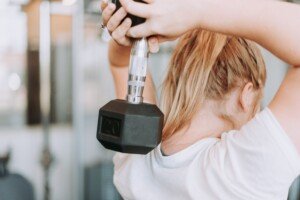
Don’t let this version lure you into letting the upper arms drift forward; the shoulder joint does not move in any version of this exercise. Only the elbow joint moves.
Double dumbbell. Yet another variation is with a dumbbell in each hand. The dumbbells can be held horizontally parallel to each other in their start position, so that their tops meet up with the trainee’s forehead at the bottom of the movement.
The other way is to hold them end to end, so that at the bottom of the movement, the back of the trainee’s hands come towards the forehead.
Stability ball. Instead of a bench, use a stability ball. This will require some core engagement (lower back and a little ab work). Lighter weight than what one normally uses with a bench will be required as well.
45 degree angle placement of upper arms. This is perfectly acceptable, as long as this angle is maintained throughout the entire set. The trainee should then lower the weight to behind the head, below face level.
Alternate grip on the EZ bar for a superset.
A superset is an intensity technique. The EZ bar has two choices for where to place hands: One is narrow width and one is medium.
A superset can be done by doing a set with first the narrow hand placement, and then immediately switching to the medium hand placement.
With this second set, do as many reps as possible to muscle failure. A superset can also be done by using the wider hand placement for the first set, and then finishing off to failure with the narrow grip.
Remember the lying triceps extension for big arms. Once a person can perform this exercise confidently without breaking form, it’s time to increase the weights and figure out how much resistance is needed for the desired rep range maxes.
 Lorra Garrick has been covering medical, fitness and cybersecurity topics for many years, having written thousands of articles for print magazines and websites, including as a ghostwriter. She’s also a former ACE-certified personal trainer.
Lorra Garrick has been covering medical, fitness and cybersecurity topics for many years, having written thousands of articles for print magazines and websites, including as a ghostwriter. She’s also a former ACE-certified personal trainer.
.
Top image: Freepik.com, Racool_studio
What Full Time Moms Should Say to Rude Questions

Here are great responses for stay-at-home moms to fire back at people who ask rude or lame questions.
Stay-at-home moms have a right to be feisty and respond with clever comebacks to rude or absurd questions from “working moms.” So here are some clever responses for all the stay-at-home moms who’ve had it with the outlandish questions and comments.
Rude question: “When your children are older, you plan on getting a real job?”
Stay-at-home mom response #1: “What part about raising kids is fake?”
Stay-at-home mom response #2: “Last time I checked, having quantity time for quality moments and witnessing developmental milestones and wiping my children’s tears and teaching them about all sorts of fascinating things is pretty real to me.”
Stay-at-home mom response #3: “So if I got a job stocking items at Walmart, that would be more real than building character in my kids; putting things in perspective for them when they feel down in the dumps; and having the time to help my kids with science projects, essays and math?”
Rude question: “Oh my, then you don’t work at all?”
Stay-at-home mom response: “Precisely. You see, I have this magic wand. I wave it and it makes my kids’ nutritious lunches magically appear.
“If I tap the wand, it creates a robot that helps with my kids’ homework.
“If I toss the wand and catch it behind my back, a nanny will appear and take care of the kids and clean the house while I watch TV all day.”
Rude comment: “So you must have lots of extra time; can you pick my daughter up from soccer practice tomorrow?”
Stay-at-home mom response #1: “Funny, I don’t recall mentioning that I had spare time on my hands.”
Stay-at-home mom response #2: “Sorry, but I’d much rather spend that extra time at the gym. It’s great to go to the gym in the middle of the afternoon before the after-work crowds get there.
“While I’m keeping my upper arms firm, my kids are playing in the gym’s daycare.”
Dumb question: “How can you spend all day with your kids?”
Stay-at-home mom response #1: How can you spend all day with corporate management, like they really have your best interests at heart?
And all day listening to the drivel of coworkers? And all day with workplace rules? Dress codes? Someone else telling you when you can take breaks? Really! How do you do it?”
Stay-at-home mom response #2: “It’s easy to spend all day with people I love. Do you love your coworkers?”
If the person says, “As a matter of fact, yes, I absolutely do love the group I work with,” then ask, “Really? Would you jump in front of a train to save any of them? I know I would for my kids.”
Dumb question: “Don’t you miss intellectual stimulation?”
Stay-at-home mom response #1: “Are you implying that working outside the home automatically burns brain cells? Tell me, what do you do all day at work – build rockets and research an AIDS cure?”
Stay-at-home mom response #2: “While the kids are napping or eating or playing quietly, I’ll take to reading the latest medical science or classic literature.
What do you read in your spare time? Or I’ll watch an educational show on TV with my kids and we both learn about how things work – shows about animals, biology, science – what do you usually watch on TV? I also take my kids to educational places like museums and arts festivals – where we both broaden our minds.”
Stay-at-home mom response #3: “What makes you think my last job outside the home was intellectually stimulating? I’d put advertisements together on a computer.
“Big deal. My brain went soggy doing that. By the way, would you like a game of chess with my nine-year-old?”
Dumb question: “What do you do all day?”
Stay-at-home mom response: “One day my husband came home from work and saw my two older kids rolling on the lawn in a fistfight, and two of the garbage cans were knocked over with garbage everywhere.
“He went inside and saw food splattered all over the kitchen walls and floor, and dirty dishes everywhere.
“The toddler, face smeared with food, was in the living room drawing on the wall with his crayons. My husband stepped over piles of dirty laundry to get to the staircase.
“He went upstairs and nearly tripped on some toys. He found me in the bathtub reading a book and eating bon bons. He asked, ‘Honey, what in devil’s name is going on?!’
“I said, Dear, you know how when you come home from work, you always ask me what I did all day? Well, today I didn’t do it.”
 Lorra Garrick has been covering medical, fitness and cybersecurity topics for many years, having written thousands of articles for print magazines and websites, including as a ghostwriter. She’s also a former ACE-certified personal trainer.
Lorra Garrick has been covering medical, fitness and cybersecurity topics for many years, having written thousands of articles for print magazines and websites, including as a ghostwriter. She’s also a former ACE-certified personal trainer.
How to Be Confident if You’re the Youngest Kid in Your Class!

There’s no shame in being the youngest kid in your class or entire grade!
I was once that kid, and I will tell you how to deal with it.
I skipped kindergarten, was 13 in the ninth grade, and 17 when I went to an out-of-state college.
Common complaints from kids who are the youngest in their class:
#1 Being made fun of for being the youngest in your grade.
Hearing from your parents, “Oh, just ignore them because they’re jealous,” doesn’t help much. Ignoring ridicule won’t make it disappear.
However, in all seriousness, ask yourself: What’s wrong with being made fun of because you’re younger than the other kids in your class?
Is there something inherently wrong with being 13, or whatever age you are?
Okay, if you’re 13 and in the sixth grade…I can understand that being made fun of for this will hurt.
But 13 in the ninth grade? You’ve accomplished something. Remind yourself of this — whether you’re actually in the ninth grade right now, or seventh grade or grade 10 — whatever your grade.
- Being younger means you’re academically ahead of same-age kids.
- This is not something that needs a fix.
Next time kids poke fun at you just because you’re younger than the rest of the class, say this:
“Well I get to graduate from high school way sooner than any of you! I’ll be free when I’m 17 (or 16)!”
Now be a good sport when you say these words; don’t speak in a hostile tone.
#2 It hurts to see classmates doing things that your parents don’t think you’re old enough to do.
Remind yourself that if your parents won’t let you start dating till you’re 15, it will take just as long to turn 15 — whether your classmates are 15, 14 or 13!
Most parents won’t let their kids date until they reach a certain age. It’s a parent’s rule that was probably decided upon before you were born.
The age of permission, whether it’s dating, going alone to the mall, babysitting or whatever, is determined by your parents’ approach to raising kids — NOT how old your classmates are!
#3 You may feel that you’re not as “mature” as the other kids in your class.
Ask yourself on what grounds do you make this conclusion? You could be dead wrong.
Often, the immature kids are either the same age as most everyone else in their class, or even a bit older.
I spent grades 9 and 10 in a school with almost 1,000 students, and this is so true: The younger kids for their grade were actually the better behaved students.
The older kids in the class thought they were the class leaders and were sometimes on an ego trip, which isn’t a mature way to think.
Being around older kids (who are mature) will accelerate your own maturity.
This is the same concept with sports. If your tennis partners are always a little better than you, you will get better faster than if your partners always play worse.
So if you’re around older kids all day long…the general rule is that you’ll be inclined to act a little older rather than a little younger.
Write down the names of kids in your grade you think are childish and immature. Write their ages next to their names. How many are older than you?
Other Points to Consider
Don’t bother trying to look older. Just be yourself. If classmates know your age, this won’t change if you start wearing makeup or doing something stupid to look older like smoking!
In fact, you may not even look younger than your peers anyways.
I looked no younger than my classmates all throughout my schooling. Many older classmates even looked younger than me.
And if you do appear a lot younger, realize there’s nothing inherently bad about a 13-year-old looking like a 13-year-old, or whatever age you are and looking your actual age!
Do classmates even know your age?
It’s possible that nobody knows you’re the youngest in the class. But maybe you’re worried about the word eventually getting out.
Remind yourself that there are kids, who are younger, who actually embrace this because — as mentioned — it’s a sign of achievement, not failure.
If you’re the youngest in your grade, stand proud and know that you’re ahead of everyone else. Focus on more meaningful things in life, such as:
Do you brush your teeth every night before bed? Do you exercise and try to eat healthy foods? And no matter what, DO NOT SMOKE. It stunts growth and does NOT make you appear older.
 Lorra Garrick has been covering medical, fitness and cybersecurity topics for many years, having written thousands of articles for print magazines and websites, including as a ghostwriter. She’s also a former ACE-certified personal trainer.
Lorra Garrick has been covering medical, fitness and cybersecurity topics for many years, having written thousands of articles for print magazines and websites, including as a ghostwriter. She’s also a former ACE-certified personal trainer.
.
Top image: Freepik.com/pressfoto
Pulmonary Embolus: D-Dimer Result Adjusted for Age 50-Plus
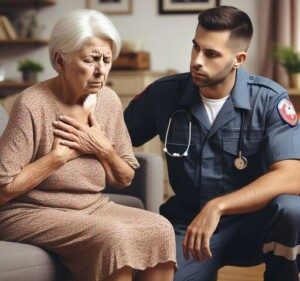
If your elderly loved-one’s D-dimer result came back positive — don’t yet panic that it’s probably a pulmonary embolism.
The older a person gets, the less meaningful is a positive D-dimer result when a pulmonary embolism is suspected.
If you present to the ER with symptoms that can be caused by a pulmonary embolism, you’ll get blood drawn for a D-dimer value.
“The body has a system that regulates our blood’s ability to clot,” says Christopher J. Hanifin, PA-C, who was previously a physician assistant in open heart surgery with Cardiothoracic Surgery of South Bend in South Bend, IN.
“Clots are always forming in our bodies in response to injury and inflammation, and the body needs a mechanism for breaking these clots down.
“As these clots dissolve, products of their breakdown can be detected in the blood.
“One of these products is called D-dimer, and an elevated D-dimer level may signal the present of a large clot somewhere in the body.”
D-dimer in Younger Adults
Hanifin explains, “In young patients, a D-dimer level is fairly sensitive for a large clot.
“It’s important to recognize that lab values do not remain fixed over the course of a lifetime.
“‘Normal’ values may change as part of the normal aging process. This is the case with D-dimer levels, which rise as people age.
“A naturally higher D-dimer level in patients can make interpretation of the test challenging.
“Fortunately, there are imaging studies that can assist in the diagnosis of pulmonary embolism.
“With older patients, a clinician will usually have a lower threshold for checking imaging studies.”
When the D-dimer is positive, the imaging tool of choice is the CT scan — to capture an image of the chest, which would reveal a pulmonary embolism if one (or more) were present.
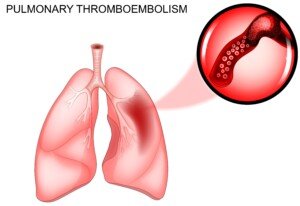
Pulmonary embolism. Shutterstock/Artemida-psy
However, the older a person is, over age 50, the less likely a positive D-dimer result will mean a pulmonary embolism.
Study: Sliding Scale Model for Evaluating a Positive D-Dimer
A 2014 issue of CHEST published study results regarding the D-dimer.
The typical scenario is that the patient presents in the emergency room with symptoms suspicious for a blood clot in the lung (PE).
Blood is drawn for the D-dimer. If it’s positive, that means a trip to the CAT scan wing or some other imaging modality.
This happened at least four times to my mother (senior aged). All the results were positive, yet a blood clot was never found.
In elderly patients, the result is often a false positive.
The study involved over 900 patients. Scott Woller, MD, adjusted the threshold for D-dimer levels to correlate to the patient’s age, with the idea of excluding a PE without having to rely upon the CT scan.
What’s the issue with the CT scan?
- It emits radiation.
- Results can take a while.
- A patient with weak kidneys is not a safe candidate, since the chemical dye used for the scan is toxic to weak kidneys.
What’s the standard cutoff for a D-dimer result to identify a blood clot?
It’s 500. Dr. Woller’s research recommends that this threshold should be bumped up for people over age 50:
Multiply the patient’s age by 10 for the cutoff value.
Thus, an 81-year-old’s cutoff value would be 810.
 Christopher J. Hanifin, PA-C, is currently Department Chair and Assistant Professor, Department of Physician Assistant, Seton Hall University, NJ.
Christopher J. Hanifin, PA-C, is currently Department Chair and Assistant Professor, Department of Physician Assistant, Seton Hall University, NJ.
 Lorra Garrick has been covering medical, fitness and cybersecurity topics for many years, having written thousands of articles for print magazines and websites, including as a ghostwriter. She’s also a former ACE-certified personal trainer.
Lorra Garrick has been covering medical, fitness and cybersecurity topics for many years, having written thousands of articles for print magazines and websites, including as a ghostwriter. She’s also a former ACE-certified personal trainer.
.
Top image: ©Lorra Garrick
Source: sciencedaily.com/releases/2014/12/141217141129.htm
Reasons the “Thigh Master” Won’t Trim Your Thighs
Even decades after its introduction on the market, the “Thigh Master” remains a popular piece of gadgetry, with its claim that it slims and tones the thighs.
One reason women fell for this was because the original pitch-person for this device was 1970’s TV star Suzanne Somers.
“I did aerobics ‘til I dropped,” Somers says in the original TV commercials.
Then she discovered the Thigh Master, she says in the ads, and is shown using the device and praising its results.
To use the Thigh Master (and subsequent similar copycat products), one lies on the floor or sits on the edge of a bed or chair and places the device between the thighs — as shown below.
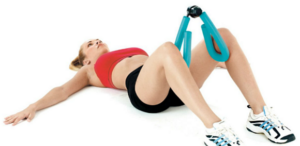
One then squeezes the thighs towards each other, against the resistance of the device.
In other words, these gadgets are portable hip adduction tools.
Hip adduction is the joint action of bringing the hips towards the midline of the body. This engages the inner thigh muscles.
The Thigh Master (and copycats) works only the inner thigh (hip adductor) muscles, yet the claim is that this gadget trims and tones the entire upper leg.
There are reasons why the Thigh Master won’t trim your thighs.
Only the hip adductor muscles are worked; it’s an isolation exercise of very small muscles.
This is the worst recipe for optimal fat burning.
Working just one muscle group, and relatively weak muscles at that, won’t cause a fat-burning cascade throughout the body — which is the only way to slash fat in the thighs.
In order to promote major fat burning, you must work large muscle groups by doing compound movements. Below are examples.
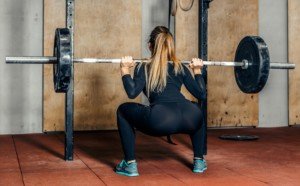
“Back” squat. Shutterstock/IvanRiver
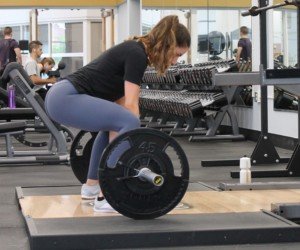
Deadlift

Jumping
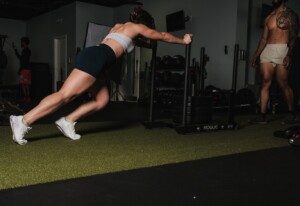
Sled push. Pexels-airam-datoon
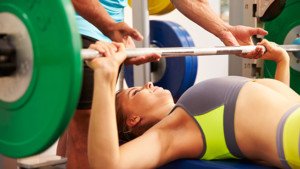
Bench press. Yes, even the upper body should be worked. Bench pressing incites fat-burning because large muscle groups are being worked.
This dramatically increases the body’s energy needs when one uses moderately heavy to heavy resistance, or intensity such as with high jumping.
When the body’s energy needs are dramatically increased, serious fat-burning is the result — fat is pulled from fat cells throughout the body, including in the thighs — to feed exhausted muscle cells.
This process shrinks fat cells, which results in fat loss and a leaner appearance.
This incredible metabolic process doesn’t occur by just sitting in a chair and moving one’s legs in and out, even if the device is set at high tension.
The nature of the movement isn’t intense enough to burn significant fat. Hip adduction is not a power based motion.
The inner thigh muscles are not big power muscles, like the quadriceps, hamstrings and gluteus maximus muscles are. Movements that are not power based just don’t burn many calories.
See the Science
Why would working only one small portion of the legs result in trimming and toning the entire leg?
If you do only hip adduction, the inner thigh will get toned (while the layer of fat remains unchanged), but the quadriceps and hamstrings will not firm up.
The toning of the inner thighs by the Thigh Master does not mean that sufficient fat will be burned to convert heavy thighs into lean, buff thighs.
Do not believe the claim that this isolation exercise will tone and sculpt the entire upper leg.
This is impossible because, as mentioned, only one small muscle group gets worked with the Thigh Master: the hip adductors.
There are six of these muscles for each leg, but even all put together, they form a small, weak muscle group.
Think about the big power movements of the lower body: squatting, pressing, jumping and sprinting. There is minimal hip adduction action in these movements.
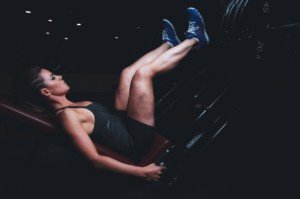
Leg press
These movements are powered by the quadriceps, hamstrings and gluteus maximus—big, powerful muscles.
If one performs exercises that target these muscles, the body will be forced to burn large amounts of fat to subsidize recovery from these workouts.
So there they all are:
Reasons why the Thigh Master won’t trim or tone the main portions of the thighs.
To slash fat in the whole leg and sculpt or tone them, one must perform intense compound movements like squats, deadlifts, leg presses, weighted walking lunges, sprints, hill dashes and box jumping routines.
 Lorra Garrick is a former personal trainer certified through the American Council on Exercise. At Bally Total Fitness she trained women and men of all ages for fat loss, muscle building, fitness and improved health.
Lorra Garrick is a former personal trainer certified through the American Council on Exercise. At Bally Total Fitness she trained women and men of all ages for fat loss, muscle building, fitness and improved health.
.
Top image: Shutterstock/KlaraBstock
Corner Bar Single-Arm Shoulder Press Benefits
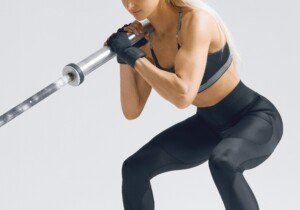
Few people do what would be called the corner bar single-arm shoulder press.
Many people may not even know what the corner bar refers to.
The corner bar is the Olympic bar that sits in the corner of a gym wall.
Sometimes there is a device on the floor in the corner, to which a person fits one end of the bar into for stability, as a pivotal point.
If the device isn’t there, the bar is jammed up into the corner anyhow.
The bar is angled out at the midpoint (about 45 degrees) between the two walls of the corner, and is typically used as a rowing device.
Corner Bar Single-Arm Shoulder Press Instructions
This exercise is also known as the landmine press. One simply faces the corner (standing midway between the two walls of the corner) and picks up the bar, and using one arm, presses it above their head. The push may be preceded by a squat or lunge.
The angle of the press can range from straight up (vertical) to outward somewhat in front of the trainee.
An Olympic bar without any added weight is 45 pounds.
This will be too heavy for women to handle with one arm unless they’re already strong from lifting weights.
Thus, in this case, the not-so-fit person should use two hands, cradling the bar in both hands, both hands placed near the neck at the bottom or start of the movement.
You then extend the arms, hands rising right before the face in doing so.
Since this is a two-hand hold, the arms will be close together during the movement, and this means that there will be more triceps involvement than you may wish for if you’re seeking more of a pure shoulder workout.
However, if one-hand is too heavy, you have no choice but to first get stronger with two hands.
You can also get stronger by performing regular dumbbell and barbell shoulder presses, as well as using shoulder press machines.
Corner Bar Single-Arm Shoulder Press Variation
Another alternative for the weaker individual is to work at the one-arm version, but add a little leg thrust with the pressing.
In fact, this technique isn’t uncommon for those who are stronger and want to work with heavy weight with this exercise.
For stronger individuals, the start position (bottom of the movement) has the bar being held at shoulder level.
The hand placement may be directly above the shoulder, sitting on top of the shoulder in the rest position before the set begins.
The down-stroke, however, does not involve a rest, but rather, lowering the bar to just over the shoulder; there is no touching between reps.
The hand placement may also be (as already pointed out) a bit ahead of the trainee, depending on how close the hand is to the end of the bar, and where they are standing relative to the end of the bar.
If the hand placement is a little outward or ahead, the hand should be aligned with the outside of the shoulder, rather than the hand being aligned with the chest bone or somewhere between the chest bone and the shoulder.
You then push the weight as high as possible, straightening the arm.
If the extension of the arm goes out more horizontally than vertically, then this means that the movement is also a chest exercise, which is not what you want if you are seeking a solid shoulder exercise.
The more vertical the press, the more targeted the shoulder muscles become.
You stand in place, feet about shoulder width apart, and press the bar all the way up, then down, with the same tempo that would be used if you were pressing a dumbbell, barbell military style or the handles of a machine.
As the burn kicks in towards the end of the set, the trainee can add a little thrust with their legs (going up on their toes), or, they can assist with their other hand.
No twisting with the corner bar single-arm shoulder press…
At no time should you rotate or twist at the waist while performing this exercise. This includes while using the free hand to assist.
The torso must remain immobile and facing the pivotal point of the other end of the bar at all times.
Otherwise, to twist while lifting with one arm will put you at risk of straining the back muscles—and the pain can be debilitating and take a few weeks to heal.
If the bar alone is not heavy enough to induce failure or near-failure in 8-12 reps (the formula for maximizing hypertrophy), then you can add plates to the bar.
A variation of the corner bar single-arm shoulder press is to perform this exercise while seated.
Again, torso should be squarely facing the corner, the seat midway between the two walls of the corner.
The seated position takes stress off the lower back.
However, this position also forces more of an isolation of the shoulder muscles; this exercise, done seated, is harder than when done standing.
 Lorra Garrick has been covering medical, fitness and cybersecurity topics for many years, having written thousands of articles for print magazines and websites, including as a ghostwriter. She’s also a former ACE-certified personal trainer.
Lorra Garrick has been covering medical, fitness and cybersecurity topics for many years, having written thousands of articles for print magazines and websites, including as a ghostwriter. She’s also a former ACE-certified personal trainer.
.

